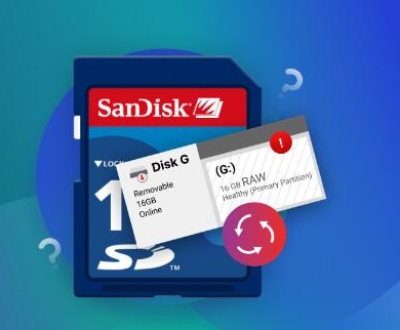Restoring permanently deleted photos can seem like an insurmountable task, but it’s not impossible. Depending on the situation, there are several ways to recover your precious memories, whether the photos were deleted from your phone, computer, or storage device.
Before we get into the specifics, it’s crucial to understand a few things about data recovery. When you delete a photo from a device, it isn’t necessarily wiped from the system immediately. The file may simply be marked as “deleted” and is made invisible to the operating system, but it may still exist on the storage medium until it is overwritten by new data. This is where the concept of recovery comes into play: if you act quickly enough, you may be able to restore the files before they are permanently overwritten.
Section 1: Permanent Deletion of Photos
When we talk about permanently deleted photos, we are referring to files that have been removed in a way that the operating system no longer makes them easily accessible. Depending on the platform or device you’re using, this can happen in various ways:
Deleted from the Recycle Bin or Trash: On Windows, macOS, and other platforms, files are first moved to a Recycle Bin or Trash folder, where they can be easily recovered. However, once the Recycle Bin is emptied, the data is marked for deletion and is no longer immediately accessible.

Data Wiped with Overwriting: In some cases, like when using certain data deletion tools, files are permanently erased by overwriting the data with random bits. This process leaves no trace of the original data.
Loss due to Formatting: If you’ve formatted a storage device, such as a memory card or hard drive, the file allocation table (FAT) may be wiped, causing your files to be inaccessible. However, unless the data is overwritten, it’s often recoverable with the right tools.
Lost via Corruption: Photos can also be permanently deleted through file corruption, caused by sudden shutdowns, physical damage to a storage device, or software malfunctions. In this case, the operating system might be unable to access the photo, even if the data is still on the drive.
Section 2: How to Restore Permanently Deleted Photos from a Windows PC
If you’re trying to recover photos that were deleted on a Windows PC, there are a few approaches you can take:
1. Using Windows File History or Backup
Windows has a built-in feature called File History that automatically saves copies of your files. If you have enabled this feature, you may be able to restore your photos from a backup.
Steps:
Open the folder where the deleted photo was stored.
Right-click in the folder and select Restore previous versions.
A list of previous versions of the folder will appear. Choose a version from the date when the photo existed.
Click Restore to recover the deleted photos.
If you don’t have File History enabled, you might have set up other backup software. In that case, you can recover photos from those backups as well.
2. Using Data Recovery Software
If you don’t have a backup or the photo isn’t available through Windows’ previous versions, data recovery software may be your best bet. Programs like Recuva, EaseUS Data Recovery Wizard, or Panda Data Recovery specialize in recovering deleted files.
Steps:
Download and install a reputable data recovery tool like Recuva or Panda Data Recovery.
Launch the program and select the drive or device where the deleted photos were stored.
Start a deep scan to thoroughly search for deleted files.
After the scan is complete, the software will present a list of recoverable files, including photos. Select the files you want to recover.
Click Recover, and choose a destination folder to save the files.
3. Using System Restore (If Photos Were Recently Deleted)
If you just recently lost your photos and are having trouble locating them with file recovery tools, you might consider using System Restore to roll back your system to a previous state before the deletion occurred. This works only if you have System Restore enabled.
Steps:
Open the Start menu and type “System Restore.”
Select Create a restore point, and under the System Protection tab, click on System Restore.
Follow the on-screen instructions to select a restore point from a time before you deleted the photos.
Complete the restoration process and check if the photos are restored.
Section 3: How to Restore Permanently Deleted Photos on macOS
If you’re using macOS, the recovery process is similar, with a few system-specific tools and options:
1. Using Time Machine
If you’ve set up Time Machine on your Mac, this tool is the easiest way to recover deleted photos.
Steps:
Open the Time Machine app from the Applications folder or the menu bar.
Navigate to the folder where the photos were stored before deletion.
Use the timeline on the right side of the screen to go back to a time when the photos existed.
Select the photos and click Restore to recover them to their original location.
2. Using iCloud Photo Library
If your photos were synced with iCloud, you can easily restore them through the iCloud interface.
Steps:
Visit iCloud.com and sign in with your Apple ID.
Open the Photos app on iCloud.
Check the Recently Deleted album. If your photos are there, select them and click Recover.
The photos will be restored to your iCloud library and synced back to your device.
3. Using Data Recovery Software
Panda Assistant is a user-friendly application developed by Panda Security, a renowned company specializing in cybersecurity solutions. While it originally started as an antivirus solution, Panda Security has evolved its product offerings to include various data management and recovery tools. Panda Assistant is part of this evolution, providing an intuitive platform for users to handle multiple tasks such as data recovery, file organization, backup management, and system optimization.
At its core, Panda Assistant is designed to be a one-stop solution for users who need to keep their digital life organized and secure. With its advanced capabilities and a simple, easy-to-navigate interface, it appeals to both novice and experienced users alike.
Key Features of Panda Assistant
Data Recovery One of the standout features of Panda Assistant is its data recovery capabilities. If you’ve accidentally deleted files or suffered from a system crash, Panda Assistant can help you recover lost data from your computer, USB drives, SD cards, and external storage devices. The software scans your system thoroughly and restores files that may have been permanently deleted, offering a much-needed solution in emergency situations.
System Cleanup and Optimization Over time, your computer can accumulate unnecessary files that slow down performance. Panda Assistant comes equipped with tools to optimize and clean up your system. By removing junk files, temporary files, and browser cache, the software can free up valuable storage space and improve your computer’s speed. It also helps in managing startup programs, making your system run more efficiently.
Backup Management Regular backups are essential to prevent data loss. Panda Assistant provides users with an intuitive backup management system that allows you to schedule and automate backups for your important files. Whether it’s personal photos, documents, or system files, you can ensure your data is always protected with scheduled backups, reducing the risk of losing valuable information.
Security and Privacy In addition to its data management features, Panda Assistant also comes with security tools that help protect your data from malware, ransomware, and other online threats. It provides real-time protection and scans for vulnerabilities, making sure that your files and personal information are safe from unauthorized access.
File Organization Panda Assistant includes options for file organization that help you easily categorize, sort, and locate files across your system. Whether you’re dealing with documents, photos, videos, or music, you can use Panda Assistant to quickly find and access your files, streamlining your digital life.
Restoring permanently deleted photos is a process that depends on the device, the method of deletion, and whether the data has been overwritten. With the right recovery tools and techniques, it is often possible to recover photos even after they’ve been deleted from the Recycle Bin or Trash. However, the key is acting quickly and not writing new data to the device, as this can overwrite the deleted files, making recovery more difficult.
About us and this blog
Panda Assistant is built on the latest data recovery algorithms, ensuring that no file is too damaged, too lost, or too corrupted to be recovered.
Request a free quote
We believe that data recovery shouldn’t be a daunting task. That’s why we’ve designed Panda Assistant to be as easy to use as it is powerful. With a few clicks, you can initiate a scan, preview recoverable files, and restore your data all within a matter of minutes.
Subscribe to our newsletter!
More from our blog
See all postsRecent Posts
- Retrieve deleted videos from sd card 2025-04-25
- How to retrieve damaged sd card? 2025-04-25
- Retrieve photos from sd card 2025-04-25

 Try lt Free
Try lt Free Recovery success rate of up to
Recovery success rate of up to









